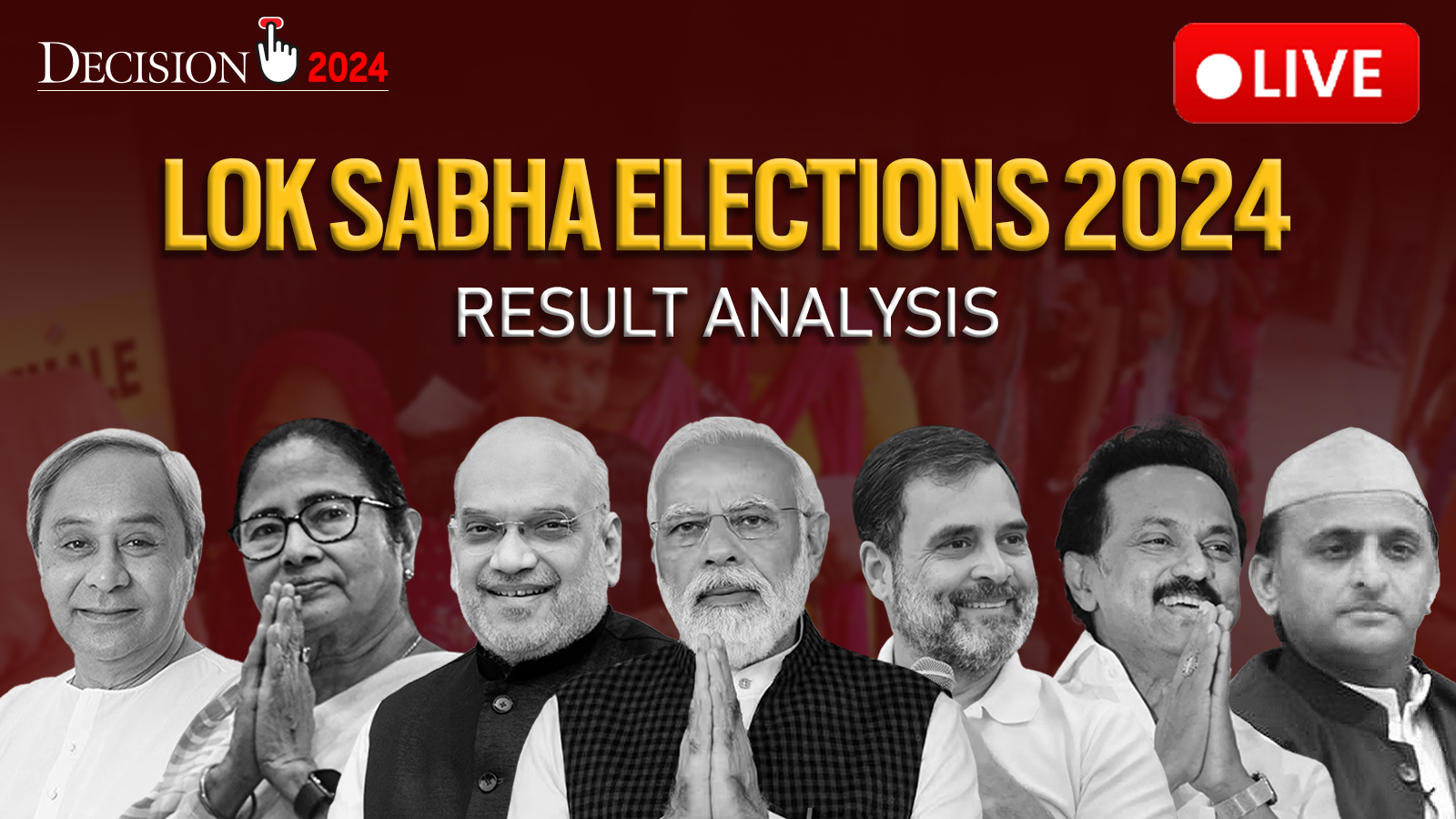Why BJP Didn’t Win the Election in Ayodhya
The Bharatiya Janata Party (BJP) suffered a significant and unexpected defeat in Ayodhya during the 2024 Lok Sabha elections. Despite its historical association with the Ram Mandir movement, which had been a cornerstone of its political identity, several factors contributed to this electoral setback. Here, we delve into the multifaceted reasons behind the BJP’s loss in Ayodhya.
-
Local Discontent and Developmental Issues
Despite the high-profile development projects such as the new township, airport, and railway station redevelopment, many locals felt neglected. Residents complained about the displacement and lack of adequate compensation due to land acquisitions for these projects. The construction of the Ram Mandir itself led to the demolition of several homes and shops, causing significant distress among small traders and local residents who were promised new commercial spaces but did not receive them (Free Press Journal) (ETV Bharat).
-
Neglect of Basic Needs
The BJP’s focus on grandiose projects overshadowed essential issues like employment, healthcare, and housing. The local populace, particularly the youth, faced severe unemployment exacerbated by issues like competitive examination paper leaks. These factors created a sense of betrayal among voters who felt their everyday needs were being ignored in favor of high-profile religious and infrastructural projects (Free Press Journal) (ETV Bharat).
-
Caste Dynamics and Candidate Selection
The Samajwadi Party (SP) strategically fielded Awadhesh Prasad, a well-regarded Dalit leader, in a non-reserved seat, effectively garnering support from the Dalit community. This move contrasted sharply with BJP’s choice of Lallu Singh, who, despite his long-standing political career, failed to connect with a broader electorate beyond his traditional support base (Rediff) (India Today). This strategic social engineering by the SP, along with dissatisfaction among the Other Backward Classes (OBCs) and Dalits, significantly impacted the BJP’s vote share.
-
Anti-Incumbency and Leadership Disconnect
There was a strong anti-incumbency sentiment against the BJP and its local leadership. Many voters felt that Lallu Singh, who had been the MP since 2014, had become disconnected from the ground realities of Ayodhya. His perceived inaction and the focus on benefiting non-local interests further alienated the electorate. The local administration’s high-handed approach and lack of responsiveness also played a role in fostering discontent (Rediff).
-
Economic and Social Disruptions
The rapid commercialization and influx of tourists disrupted the daily lives of Ayodhya’s residents. The increase in property prices due to real estate speculation and the transformation of Ayodhya from a pilgrimage center to a tourist hotspot marginalized local populations who could not afford the rising costs of living. This economic displacement, coupled with social disruptions caused by frequent VIP visits and security lockdowns, contributed to the local frustration (Rediff).
-
Religious Sentiments and Political Fatigue
While the Ram Mandir remains a symbol of religious significance, many voters were fatigued by the constant political exploitation of the temple issue. The BJP’s repeated emphasis on religious sentiments without addressing substantive local issues created a sense of disillusionment among the voters, who were increasingly demanding tangible developmental outcomes over symbolic victories (Free Press Journal).
-
Effective Opposition Campaign
The opposition, particularly the SP, ran an effective campaign that addressed local grievances and highlighted the BJP’s shortcomings. The SP’s focus on social justice, employment, and inclusive development resonated with the electorate. Their ability to unite different voter bases, including Muslims, Dalits, and OBCs, into a cohesive voting bloc was instrumental in their victory (ETV Bharat).
Conclusion
The BJP’s loss in Ayodhya is a reflection of the complex interplay between local issues, social dynamics, and political strategies. Despite the historical and ideological significance of Ayodhya for the BJP, the party’s failure to address the immediate and practical concerns of the local population led to its defeat. The election results underscore the importance of responsive and inclusive governance that goes beyond symbolic gestures to address the real needs and aspirations of the people.

The Next Steps for BJP in Ayodhya Post-Election Defeat
The recent electoral defeat in Ayodhya, a constituency deeply symbolic for the Bharatiya Janata Party (BJP), marks a significant setback. Despite the completion of the Ram Mandir, which was expected to consolidate their political foothold, the BJP’s loss indicates a need for recalibration. To regain their ground, the BJP must adopt a multifaceted strategy focusing on reconnecting with the electorate, addressing local grievances, and reassessing their political approach. Here are the detailed steps that the BJP can take moving forward:
-
Rebuilding Grassroots Connections
One of the key reasons behind the BJP’s loss was the perceived disconnect between the party’s local leadership and the electorate. To address this, the BJP needs to:
Strengthen Local Leadership: The BJP should prioritize empowering local leaders who have a strong connection with the community. This includes promoting leaders from diverse backgrounds who can better represent the local demographic composition.
Community Engagement Programs: Organizing regular community meetings and forums to understand and address local issues will help rebuild trust. These interactions can provide a platform for residents to voice their concerns and for leaders to demonstrate their commitment to resolving these issues.
Increased Presence: Party members and leaders should increase their presence in the constituency, not just during election periods but consistently throughout their tenure. This continuous engagement will ensure that the party remains in touch with the ground realities.
-
Addressing Developmental Concerns
Economic and social disruptions caused by the rapid development around the Ram Mandir were significant factors in the BJP’s defeat. To mitigate these concerns, the party should focus on:
Inclusive Development Plans: Developing a comprehensive plan that includes compensation and rehabilitation for those displaced by development projects. Ensuring that local traders and residents benefit from the economic growth associated with tourism can address the economic displacement they currently feel.
Employment Opportunities: Tackling unemployment through skill development programs, promoting local entrepreneurship, and attracting new industries to the region will directly address one of the major grievances.
Infrastructure Development: Ensuring that the benefits of infrastructure projects, such as improved transportation and better public services, are accessible to all sections of society, especially the marginalized groups.
-
Policy Reforms and Transparency
The BJP needs to restore faith in its governance by focusing on transparency and reform:
Transparent Governance: Implementing transparent processes in development projects and land acquisitions to ensure fairness and prevent any misuse of power. Regular audits and public disclosures of project statuses can help in building trust.
Policy Reforms: Reassessing policies to ensure they are inclusive and beneficial for the entire population. Special attention should be given to policies affecting employment, education, and social welfare.
Addressing Corruption: Establishing strict anti-corruption measures and ensuring that any allegations of corruption are dealt with promptly and transparently.
-
Caste and Community Dynamics
Understanding and addressing the complex caste dynamics is crucial for the BJP to regain its footing:
Inclusive Representation: Ensuring that candidates and party officials represent the diverse caste and community demographics of Ayodhya. This means promoting leaders from various backward castes and Dalit communities who can effectively advocate for their constituents.
Community Outreach Programs: Initiating programs that specifically address the needs of marginalized communities, ensuring their integration into the broader developmental narrative.
-
Strategic Political Realignment
Reevaluating political strategies and alliances will be essential:
Coalition Building: Forming strategic alliances with local parties and influential community leaders to broaden their support base. This can help in consolidating votes from different segments of the population.
Focused Campaigns: Developing targeted campaign strategies that address specific local issues rather than relying solely on broader nationalistic themes. This could involve focusing on local governance, infrastructure, and economic development issues that directly impact the electorate.
-
Cultural and Religious Sensitivity
While the Ram Mandir is a significant symbol, the BJP needs to balance religious sentiments with practical governance:
Cultural Initiatives: Promoting cultural initiatives that celebrate the local heritage and traditions of Ayodhya, ensuring that development does not erode the cultural fabric of the community.
Religious Harmony: Working towards maintaining religious harmony by being sensitive to the concerns of all communities. Avoiding polarizing rhetoric and actions can help in building a more inclusive environment.
-
Youth Engagement
With a significant portion of the electorate being young, engaging the youth is crucial:
Youth Programs: Launching initiatives focused on youth development, including education, sports, and vocational training. These programs can help in addressing the aspirations and grievances of the younger population.
Digital Outreach: Leveraging digital platforms for better communication with the youth, providing them with a platform to voice their concerns and ideas.
Conclusion
The BJP’s loss in Ayodhya is a wake-up call that necessitates a thorough introspection and strategic overhaul. By focusing on rebuilding grassroots connections, addressing local developmental concerns, reforming policies, understanding caste dynamics, realigning political strategies, being culturally sensitive, and engaging the youth, the BJP can work towards regaining the trust and support of the Ayodhya electorate. This multifaceted approach, if implemented effectively, can help the party not only recover from this setback but also strengthen its position for future electoral battles.


